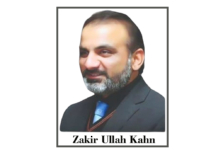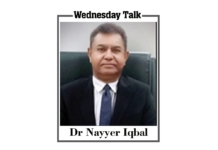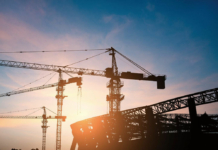I learned in recent days that a very few people in the caretaker government want to further postpone the elections. Their designs, however, faced a severe setback as the whole nation wants election. Chief Justice Qazi Faiz Isa’s unequivocal stance on the matter cannot be overlooked.
So, according to my information, elections would be held on February 8, 2024. The main credit for the election should go to Chief Justice Isa’s stern intervention. Things may go out of control if the election date is pushed forward. The inherent truth remains: there is no substitute for an elected government.
Once this is settled that elections are being held, and for sure on February 8, the next question is: who is winning the elections.
A prevailing sentiment suggests that a good section of the public is supporting the Pakistan Tehreek-i-Insaf (PTI). Also, there is an impression that the establishment may employ various means to suppress the PTI, ensuring it does not secure a victory akin to the 2018 elections.
Well, we are no strangers to this situation: The Pakistan Muslim League-N faced a similar scenario in the previous elections.
Let me explain the truth behind the popularity of the PTI. The PTI currently enjoys unparalleled popularity, especially on social media platforms. The notion persists that if given a level playing field, the PTI would potentially sweep the election.
The reality is not what is the perception is. A constituency-wise evaluation comparing the PTI and the PML-N indicates a marginal difference in popularity, with neither party significantly outpacing the other.
The PTI is good at making perception through the strategic use of social media campaigns. It has an army of YouTubers and journalists, who have shaped public opinion. It is crucial to dispel the notion that the PTI holds an insurmountable lead over its political counterparts.
In today’s politics, social media has a big impact, especially in Imran Khan’s strategy. A lot of money spent on social media campaigns has helped shape what people think and make PTI look stronger. PML-N, instead of directly fighting with PTI’s usual voters, now has to deal with Imran Khan being popular on social media.
How can PML-N fight against PTI’s fake popularity made with lots of money spent on social media? One idea is to let PTI candidates, who are currently in jail, join the general elections. But this might not happen, making us wonder if the election playing field is fair.
We need to know that PTI didn’t just come to push PML-N away; it goes back to the tragedy of May 9. The Pakistani forces see this event as a plot against them, making politics in Pakistan more complicated. The mix of history, power, and politics makes Pakistani politics tricky.
Social media has affected some young people in Pakistan, but we should remember this also happens worldwide. In the Middle East, countries like Lebanon, Libya, Yemen, Syria, and Bahrain saw big changes because of the West using social media. In Pakistan, PTI’s social media success comes from similar plans, even with Imran Khan not directly involved.
Now, we are waiting for the election schedule, and the country’s politics will change with rallies happening everywhere. The election results in districts where Nawaz Sharif holds rallies can be guessed by how people react during these events. Nawaz Sharif’s rally is crucial for PML-N candidates’ success.
The unfolding story in social media and politics is getting ready for elections. As campaigns start, we will see how these choices and history will shape the path of Pakistani politics soon. We keep our fingers crossed.







